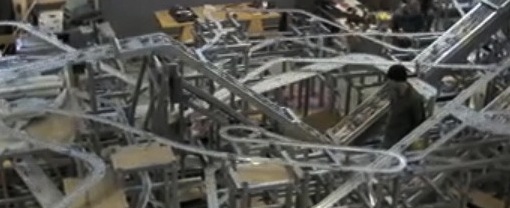Sega Toylets lets you game with your boy bits
 Friday, December 17, 2010 at 1:06PM
Friday, December 17, 2010 at 1:06PM 
Sega Toylets lets you game with your boy bits:
Sega, the once proud innovator of console design, is back in the gaming hardware business! Only not in the fashion you might think. The company has just rolled out a trial of its Toylets system, which embeds a pressure sensor into otherwise innocuous urinals and gives life to every bad piece of joystick-related innuendo you ever heard. Four games are available right now, to be enjoyed through a display mounted at eye level, including one where the intensity of your delivery helps blow a girl’s skirt up and another that offers (asynchronous!) multiplayer competition. The latter game matches you against the previous dude to have used the porcelain repository, thereby finally providing Japanese men with a measurable way to settle pissing contests…
Follow the original link to see a video. The best part? Sega uses one of those peeing-boy-fountains to demonstrate the system.


